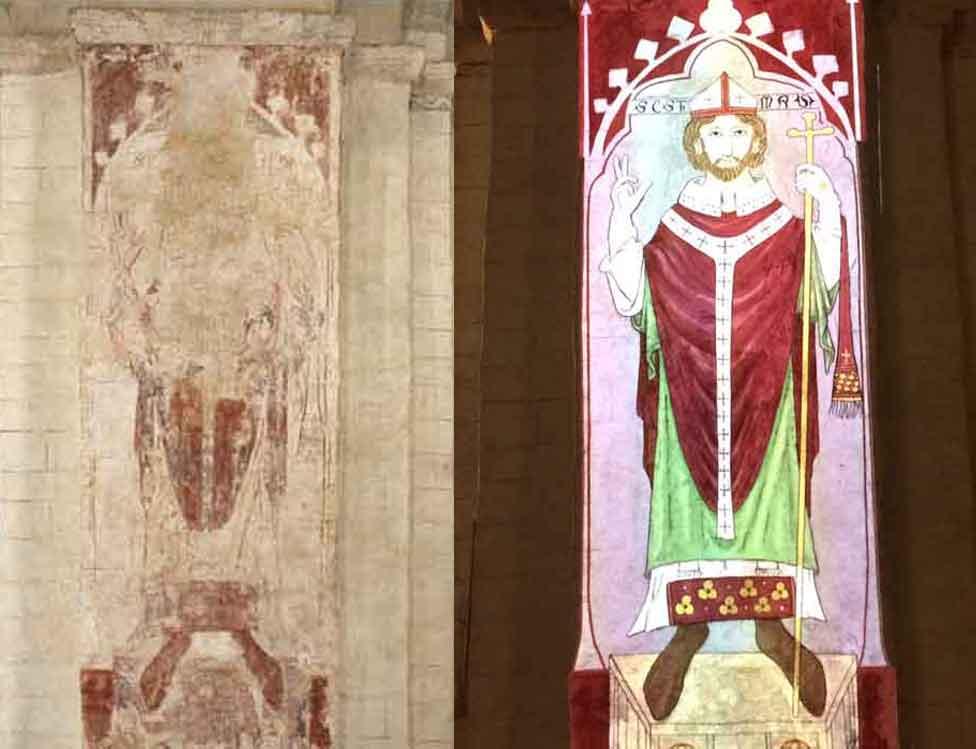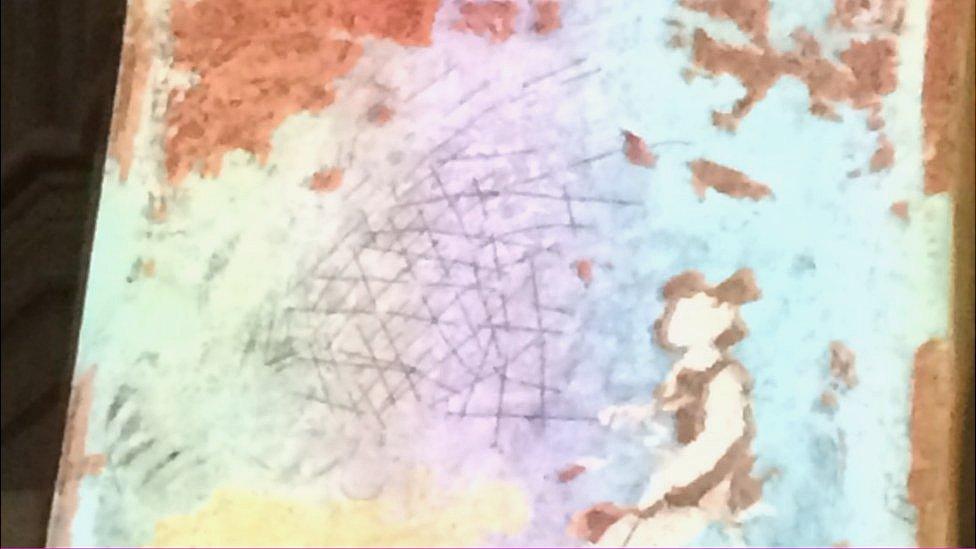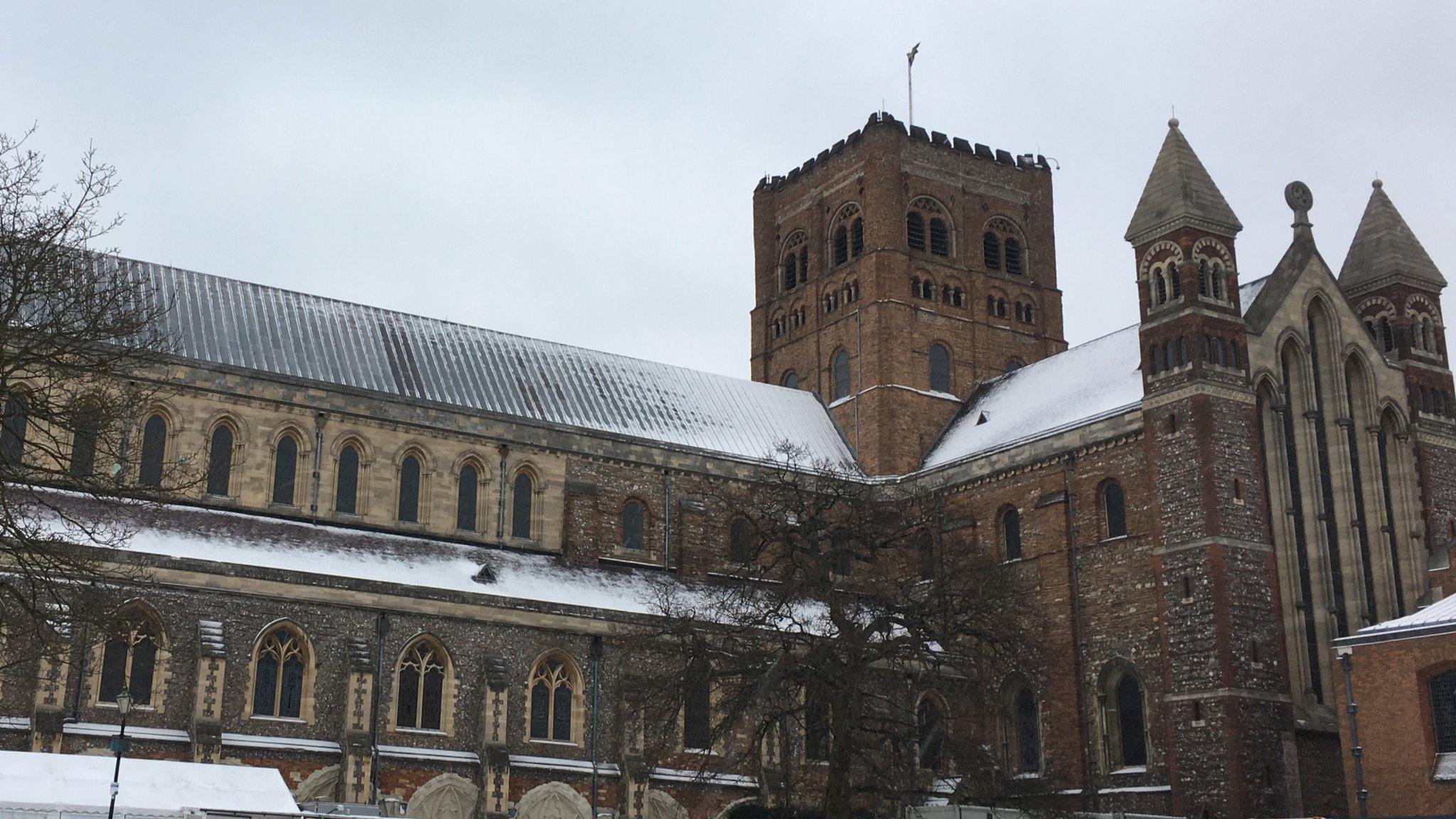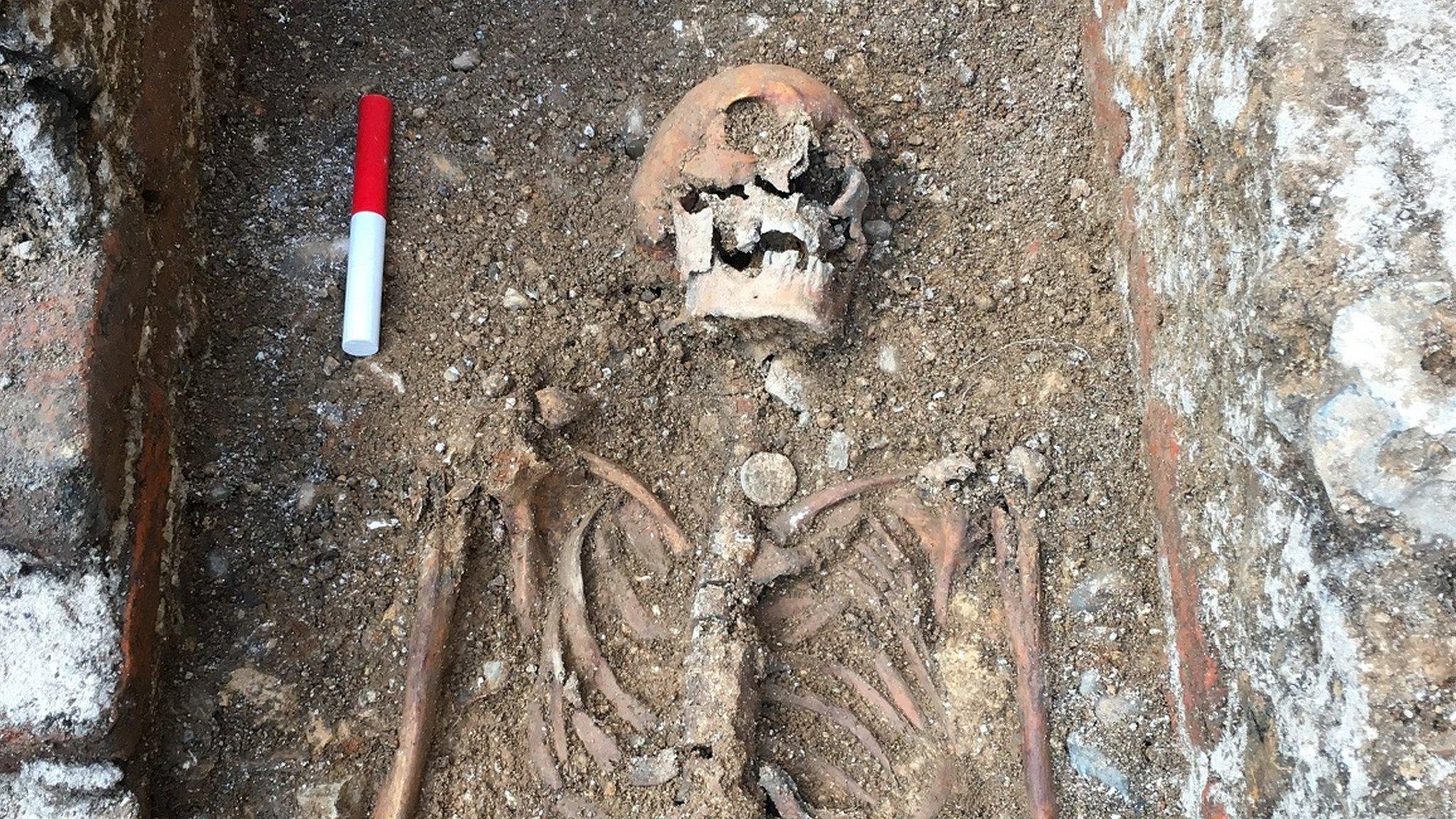St Albans cathedral wall paintings recreated with light projections
- Published

Cathedral guides chairwoman Julia Low said other places of worship wanted to do something similar, but "you've got to have the wall paintings to start with"
Defaced medieval wall paintings that made pilgrims "fall to their knees" have been recreated at a cathedral for the first time in nearly 500 years using light projections.
The four paintings in St Albans Abbey date from the early 13th Century.
They were whitewashed over after the dissolution of the abbey's monastery by Henry VIII in 1539.
The cathedral said it had "long wanted to lift the veil of time to see how these paintings might have appeared".

The scene depicting St Alban and St Amphibalus was tackled first as it was deemed to be the hardest to recreate
Cathedral dean, the Very Reverend Dr Jeffrey John, said: "Seeing them helps us understand why pilgrims of the Middle Ages are said to have fallen to their knees in wonder."
The new colour images are being projected over what is left of the original paintings on the walls.

The painting of St Christopher, patron saint of travellers, is near to where the Abbey's entrance was originally

The painting of Thomas Becket is the largest image of him left in this country
The Abbey, built on the site of the execution and burial of St Alban, has been place of pilgrimage for more than 1,700 years.
Painstaking research
Dating from about 1080, the Norman originals were defaced and whitewashed after the Reformation.

Images of a purse, keys and rosary led experts to identify this painting as St Sitha of Lucca
Starting with high quality digital photographs of the paintings, experts recreated the more colourful light projections.

Craig Williams, a British Museum art historian and "IT geek", studied the wall paintings to work out what they looked like when created
Julia Low, chairwoman of the cathedral guides, said: "The colours are as close as we believe we can get to what they may have looked like.
"They are really unique. This has not been done anywhere else in this format."
She said when a conference of 60 cathedral delegates saw the illuminations, their "collective jaws dropped".
The paintings will be illuminated every half hour between 13:00 and 17:00 BST on Sunday and during guided tours.

The wall paintings in the nave of St Albans Abbey were hidden from view after the Reformation

One layer shows how the faces of the saints were defaced with cross-hatching marks
- Published20 July 2019

- Published22 June 2019

- Published18 March 2018

- Published24 December 2017

- Published7 December 2017
